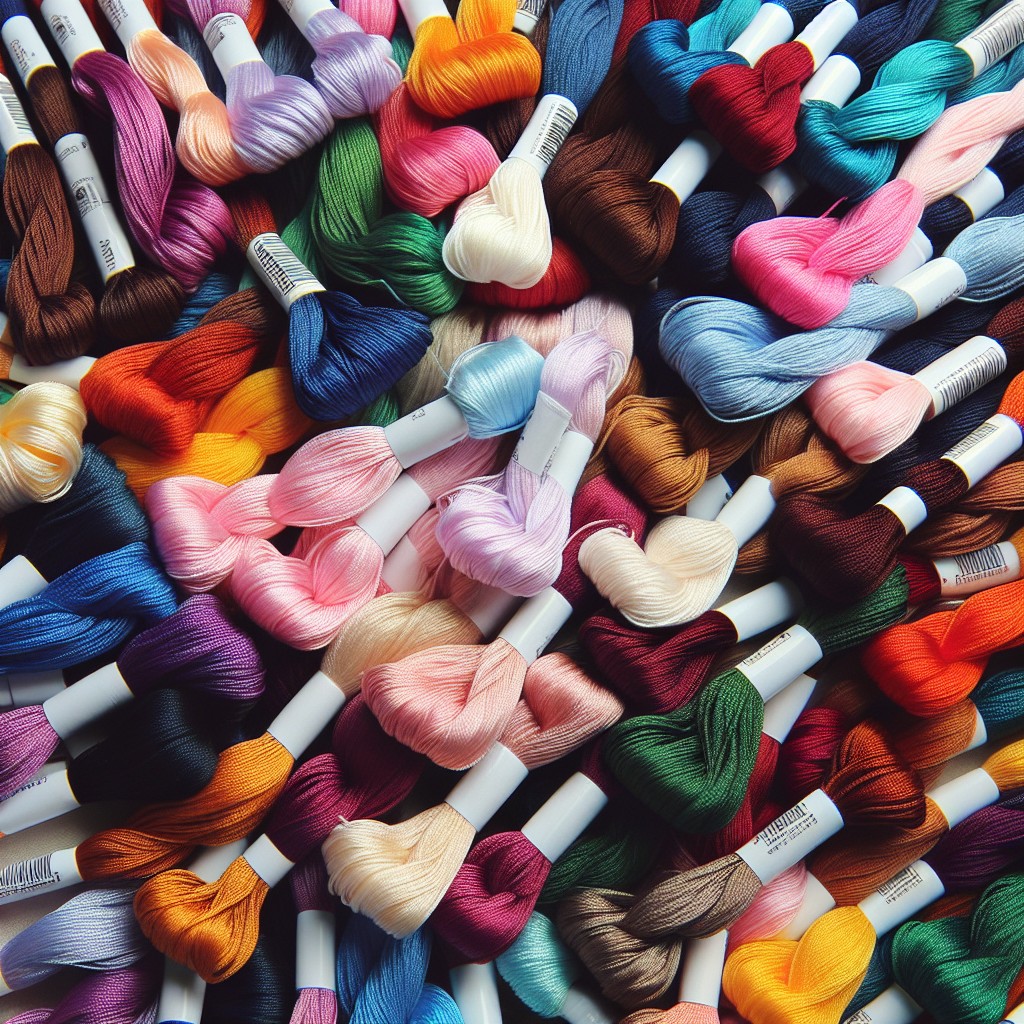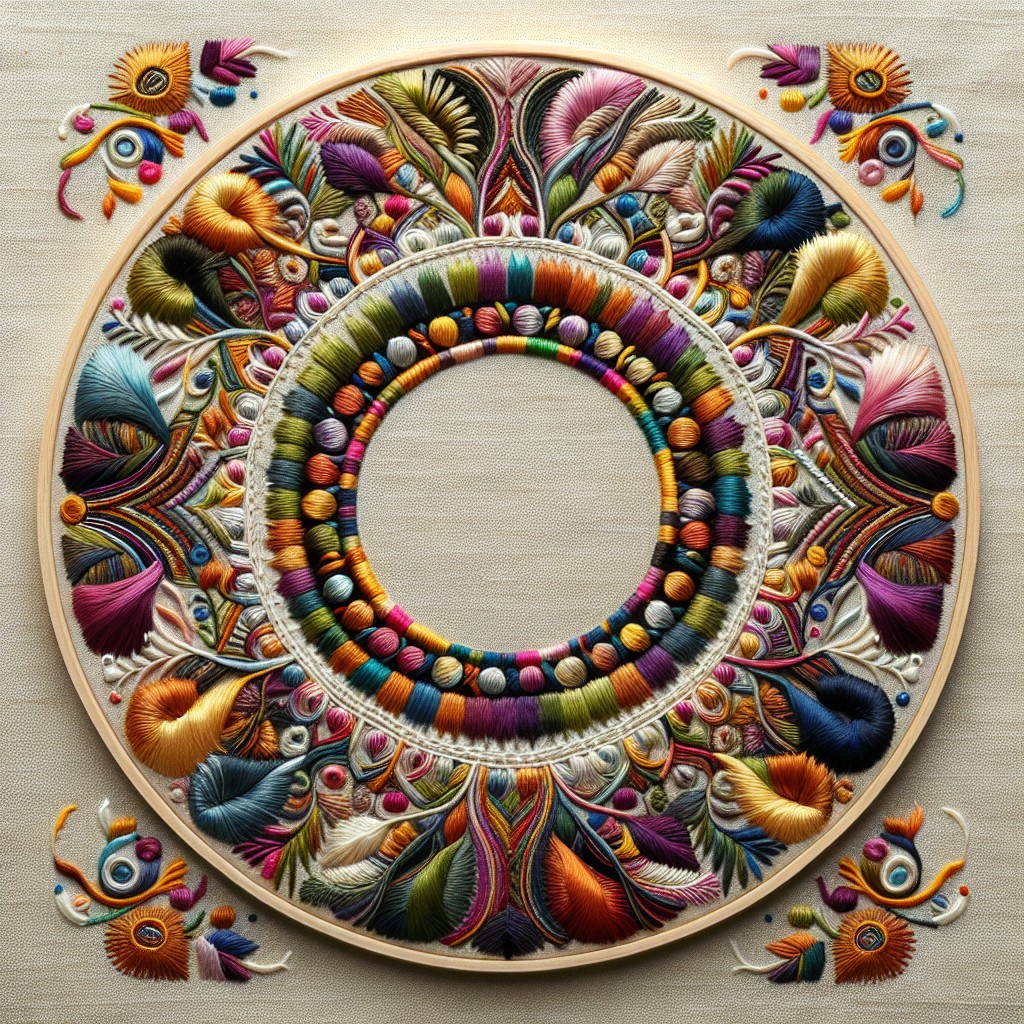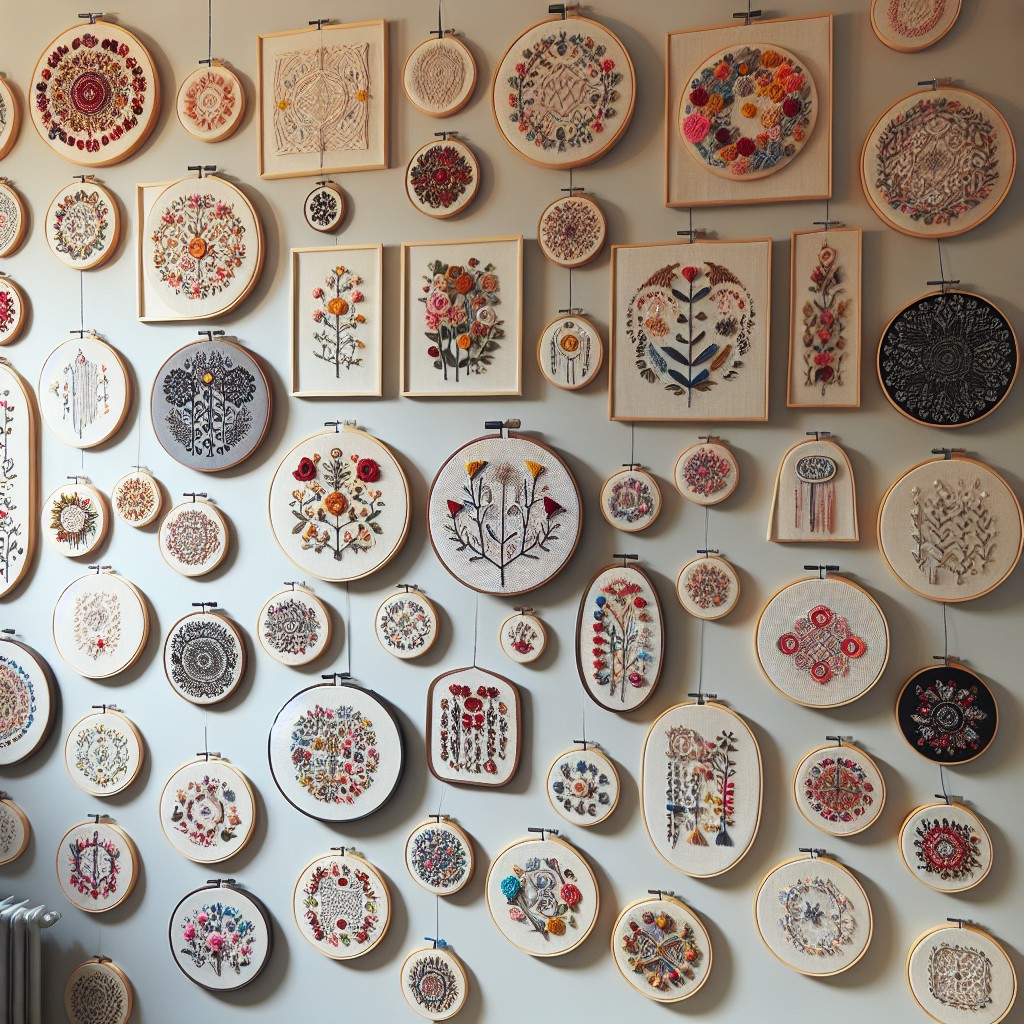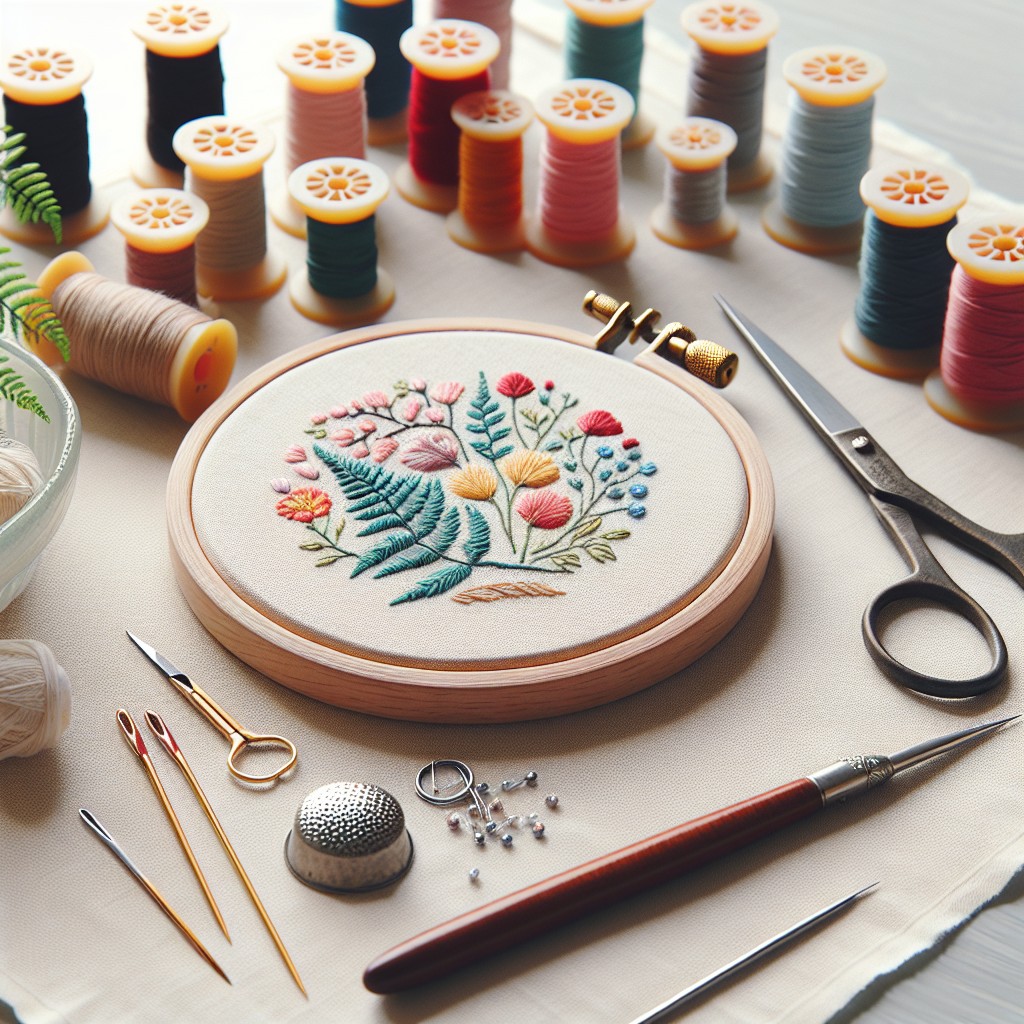This how-to guide provides clear, step-by-step instructions for creating beautiful poppy embroidery, perfect for beginners and seasoned crafters alike.
Key takeaways:
- Select appropriate fabric for poppy embroidery, considering weight and durability.
- Choose embroidery threads that mimic the vivid colors of natural poppies.
- Master outlining techniques like backstitch, chain stitch, and split stitch.
- Use satin stitch for smooth petals and incorporate French knots for texture.
- Add dimension and detail with padding stitches, contrasting thread, and French knots.
Selecting Fabric for Poppy Embroidery
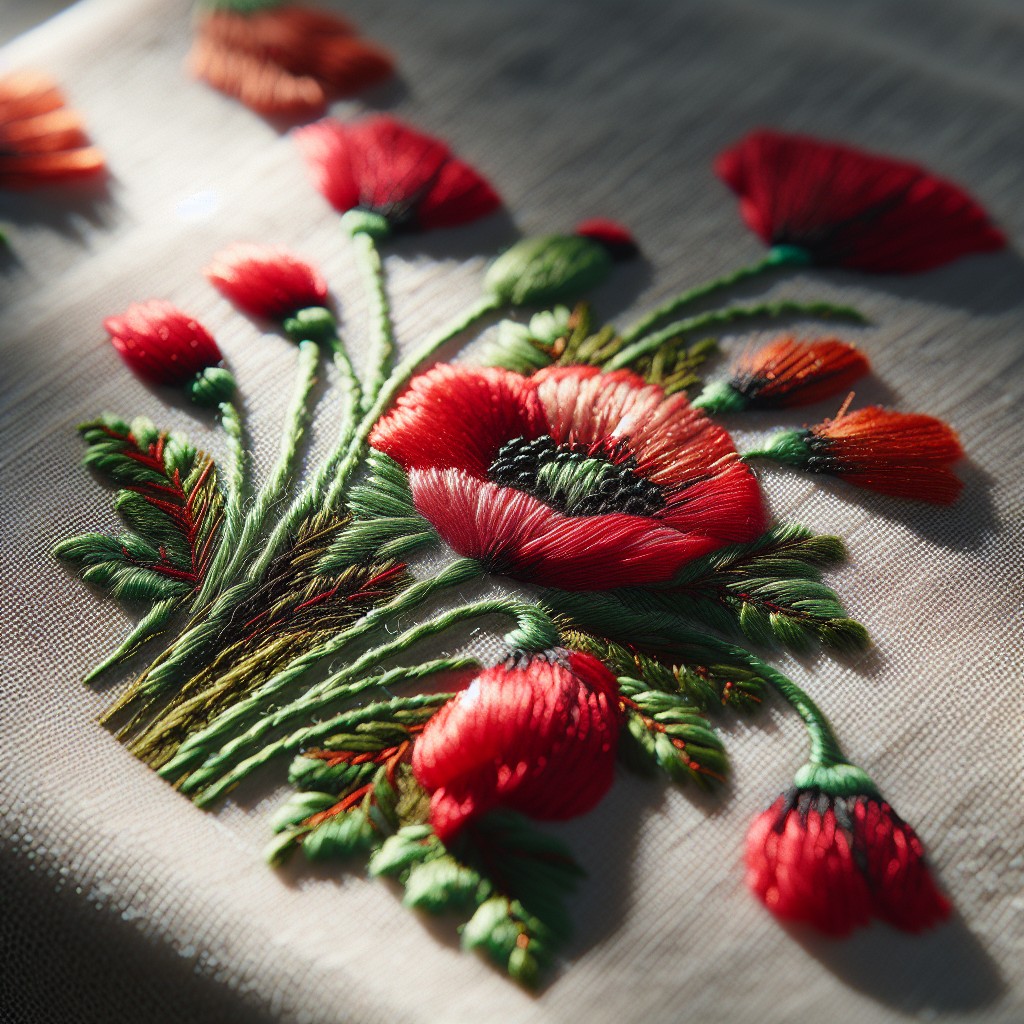
Selecting an appropriate fabric is crucial for achieving a high-quality finish in your poppy embroidery project. Lightweight, closely woven fabrics like cotton twill, linen, or high-thread-count quilter’s cotton provide a sturdy base that can handle the tension of embroidery without puckering.
If a gauzy, ethereal effect is desired, opt for organza or silk gauze, but be prepared to stabilize the fabric with an appropriate backing material.
Always consider the end use of the embroidered piece—if it’s going to be a wall hanging, for instance, a heavier canvas or duck cloth can give weight and durability.
For garments, choose a fabric that complements the drape and style of the clothing item, ensuring the embroidered poppies move naturally with the fabric.
Choosing the Right Embroidery Threads
Select threads that mimic the vivid hues of natural poppies for a lifelike effect. Cotton floss is a favorite for its matte finish and wide color range, while silk threads offer a subtle sheen that can elevate the design.
Consider variegated threads to add depth and variation without changing skeins. For dimension, use heavier threads for the flower’s outline and lighter ones for delicate details. When stitching the black center, a high-sheen thread can represent the glossy seeds effectively.
Remember to match the thread weight with the fabric and needle size to ensure smooth stitching.
Outlining Techniques for Poppy Shapes
Mastering the art of outlining is essential when embroidering poppies, as it provides a scaffold for your design, ensuring petals and details have definition and depth. For a seamless start, transfer the poppy design onto your fabric using a water-soluble pen or pencil, which can be easily removed later.
Backstitch is a robust choice for creating smooth, continuous lines, while chain stitch can add texture and a slightly raised effect to your outlines. When dealing with curves or circles, like the center of a poppy, consider using a split stitch. This method offers greater control around the curves, facilitating a cleaner finish.
For the finest details, such as delicate veins in the petals or tiny specks in the flower’s center, a straight stitch with a single thread can achieve the narrow, precise lines needed for naturalistic detail.
Remember to keep your stitches uniform in length and tension – consistency is key to a polished outcome. As you progress, regularly check the back of your work to ensure no knots or tangles can mar the front’s appearance.
Stitch Types Suitable for Poppy Petals
The satin stitch is ideal for the smooth, silk-like surface of poppy petals, creating a solid, lustrous block of color. Employ this stitch when filling in the petals, keeping your stitches close together and parallel for a neat appearance. For more texture or a ruffled look, consider using the long and short stitch, which is a variation of the satin stitch that allows for blending colors and creating a subtle gradient effect.
For the petal outlines, the backstitch provides crisp, clean lines that define the shape of your poppy. It’s straightforward, making it suitable for embroiderers of all levels. If you’re aiming for a more decorative edge, the stem stitch can give a slightly twisted, rope-like contour.
Incorporate French knots or seed stitches to represent the petal’s texture or darker spots for a realistic touch. These small, scattered stitches can add depth and intricacy to your poppy design. Remember, the key is to reflect the delicate nature of the petals through your choice of stitches, mirrors the beauty found in nature.
Finishing Touches for Poppy Embroidery
Adding final touches to your poppy embroidery can truly elevate the piece, giving it a lifelike and polished appearance. To achieve this, consider:
- Adding Dimension: Utilize padding stitches underneath the satin stitch to give petals a raised effect, mimicking the natural curve of a poppy.
- Highlighting Details: Employ a few straight stitches in a lighter or contrasting thread color at the petal edges or centers for depth and detail.
- Incorporating French Knots: To replicate the poppy’s stamen, stitch French knots in the center with black or dark brown threads.
- Securing The Threads: Ensure all back threads are tied off and snipped close to the fabric to prevent unraveling.
- Pressing: Gently press your finished embroidery from the backside to smooth out any puckering and present a clean, finished piece.
Implement these techniques carefully, paying attention to the poppy’s natural characteristics for a satisfactory result.
FAQ
What is floral embroidery called?
Floral embroidery is commonly known as Phulkari in embroidery terminology.
What is embroidery work?
Embroidery work is the art of decorating primarily textile fabric using techniques like crewel work, needlepoint, cross-stitch embroidery, and quilting, achieved by the application of a needle and thread, and occasionally fine wire.
Which are the best fabrics for floral embroidery making?
Linen, cotton, and silk are top choices for floral embroidery due to their durable nature and smooth textures that are ideal for intricate designs.
What are the different types of stitches used in embroidery work?
In embroidery work, varied stitches like the Chain Stitch, Cross Stitch, Back Stitch, Satin Stitch, French Knot, and Lazy Daisy Stitch are commonly used.
Can you describe the role of embroidery in the fashion industry?
Embroidery in the fashion industry serves to add unique aesthetic details, introduces texture and dimension, and allows for strong personal and cultural expression in garments.

